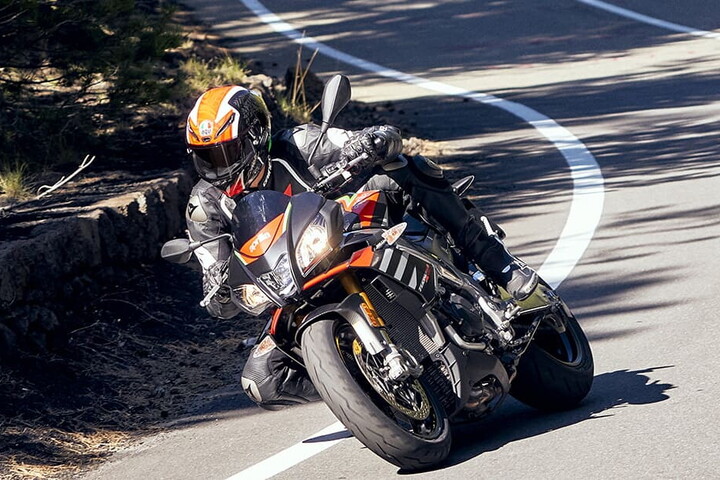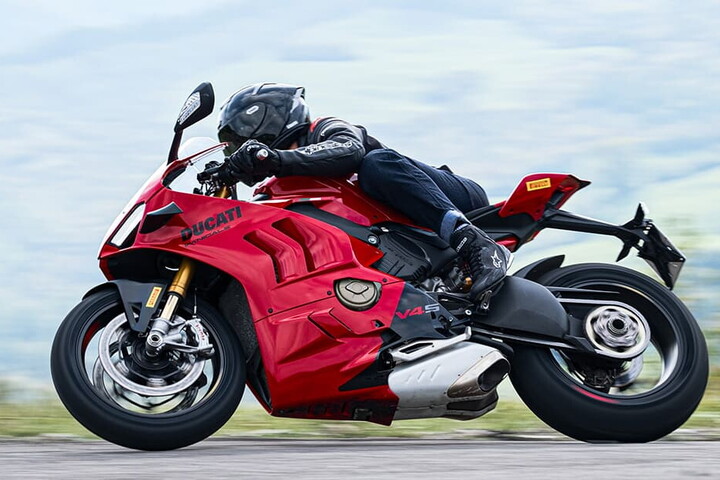Historically, a motorcyclist was always a skilled mechanic, capable of taking care of their own bike by performing minor to medium maintenance. This was done partly to keep their two-wheeled companion "healthy" (and thus avoid potential problems and hefty mechanic bills), and partly out of love.
Even today, this habit is still alive for many motorcyclists; for enthusiasts, working in your own equipped garage is a real pleasure.
However, the evolution of technology, electronics, and mechanics has made it more complex to perform various operations yourself today. In some cases, these require greater precision or professional tools that aren't always accessible to everyone.
However, DIY motorcycle maintenance hasn't disappeared; it's just shifted to other types of tasks. In this quick guide, we'll look at what you can do at home and what we advise you to leave up to a specialised workshop.
To conclude, a small "nostalgia trip": we'll see what was possible when motorbikes were simpler and mechanics more accessible.
What you can do at home
Today, most operations primarily involve checks, which are very useful for keeping your motorbike in perfect condition, ensuring efficiency and safety. Here's what they are, starting with the simplest ones, which should be performed frequently.
Important: all these operations must be carried out following the instructions in the owner's manual to avoid incorrect adjustments and, in some cases, prevent damage.
1. Checking tyre condition and pressure
This is a very simple and free operation, yet it's rarely performed by most motorcyclists. Tyres should always be kept at the correct pressure, as indicated in the owner's manual, and this should be checked once a week.
Another check to perform is on the tyre's condition: we recommend you change them when the tread depth is less than 2 mm.
These simple operations are fundamental, not just for safety, but also for riding enjoyment. Tyres with incorrect pressure (generally under-inflated) or those that are very worn negatively affect the motorbike's dynamic capabilities and diminish the pleasure of riding.
2. Visual inspections
Simple visual inspections allow you to check the condition of your brake pads and the functionality of your lights and turn indicators. To check gaskets, hoses, and fittings, just make sure there are no leaks of oil or various fluids.
3. Start-of-season checks
When you get your motorbike back on the road after a break, it's a good idea to perform a series of checks.
• Battery. Check its condition, perhaps using a simple trickle charger.
• Controls and adjustments. Check the position of the levers, controls, rear-view mirrors, and handlebars.
• Chain drive. This needs to be cleaned and lubricated, an operation to repeat every 500-800 km or after rain. Just use a degreasing spray, a brush, and then apply a specific lubricant. Finally, check the tension and ensure there's no play difference when you spin the wheel.
• Belt drive. Check the condition of the belt and pulleys, ensure there are no cracks or damaged parts, and again, check the tension.
• Shaft drive. Check the oil level, make sure there are no leaks, and check for any abnormal play or unusual noises.
In all cases, you should always refer to your owner's manual, which also indicates the lifespan of the transmission system.
4. Oil and oil filter change
This is an easy, cheap, and important operation for the health of your engine. You'll need spanners for the filter and the oil pan plug, along with a drain pan. It should be performed with a stand that keeps the motorbike upright. In some cases, it's necessary to reset the maintenance control system, but this requires the intervention of a specialised mechanic.
Caution: used oil contains heavy metals, hydrocarbons, and other toxic substances. It persists in the environment and can damage aquifers, soil, and living organisms. It must be disposed of according to the current regulations in your country.
What's best left to a specialised mechanic
Today's motorbikes are very sophisticated; electronics control all engine and electrical system parameters. There are control units, sensors, ride-by-wire systems, quickshifters, electronic suspensions, ABS: everything operates under the strict control of the main ECU, which detects even the smallest discrepancy in the entire system. The result? A malfunction warning light comes on, and the bike could stop. In some cases, an incorrect intervention can cause damage: it's better to entrust complex jobs to a specialised mechanic who has specific diagnostic systems (OBD).
Even the mechanics have become very complex: not only has it become difficult to perform tuning operations, but even changing spark plugs can be a complex task because it often requires disassembling a large number of parts. Additionally, specific spanners and the workshop manual are needed to perform the work correctly.
Operation nostalgia: when we were all mechanics
The figure of the motorcyclist-mechanic emerged with the motorbike itself, back when maintenance (even extraordinary work) was the norm. This era gradually faded in the 1980s with the arrival of the lightning-fast and sophisticated Japanese superbikes. Before this shift, what kind of work did we do in the garage (or even by the roadside)? Let's recall some of the most evocative operations.
1. Adjusting valve clearance
This operation was standard practice, as engines back then often required it (for example, every 5,000-10,000 km). It was easily done with spanners, a feeler gauge, and a bit of patience: you just had to open the tappet cover and adjust the screws and lock nuts.
A more complex operation was valve lapping. This required removing the cylinder head, disassembling the valves, applying grinding paste to the edge of each, reinserting them into their housing, and rotating them to clean the two surfaces. This had to be repeated for each valve, and finally, everything needed to be reassembled, including the timing, which had to be correctly phased. This ensured a good seal between the valve and its seat, preventing compression loss.
2. Cleaning and synchronising carburettors
Generally, engines had one carburettor per cylinder. They needed to be synchronised to ensure smooth engine operation. This was done with vacuum gauges, which measure the vacuum in each manifold. This vacuum had to be equal for each cylinder to balance the engine's performance.
3. Spark plug replacement
This, too, was a routine operation, easily done with a simple "spark plug spanner" because the mechanics allowed for easy access to the cylinder heads. Today, it's largely forgotten, not only because spark plug housings are often very difficult to reach, but also because it may be considered unnecessary, as plugs can easily last 50,000-60,000 km.
4. Other simple operations
Changing the oil and filter is still the same, but back then, there was no need to reset any electronic sensors. The electrical system was entirely analogue, without control units: it was possible to repair a fault on the fly with simple electrical wire and adhesive tape. The same goes for replacing gaskets: it was done calmly in the garage, without difficulty.
Essentially, until the 1970s, a motorbike was a pure and simple mechanical machine. With a bit of manual skill, you could disassemble half the engine, fix the lighting system, change the final drive, or replace the head gasket.
Today, however, in high-end motorcycles, everything is controlled, and even replacing a simple light bulb with a non-standard one can be a problem: if the ECU "notices", it shuts everything down.




